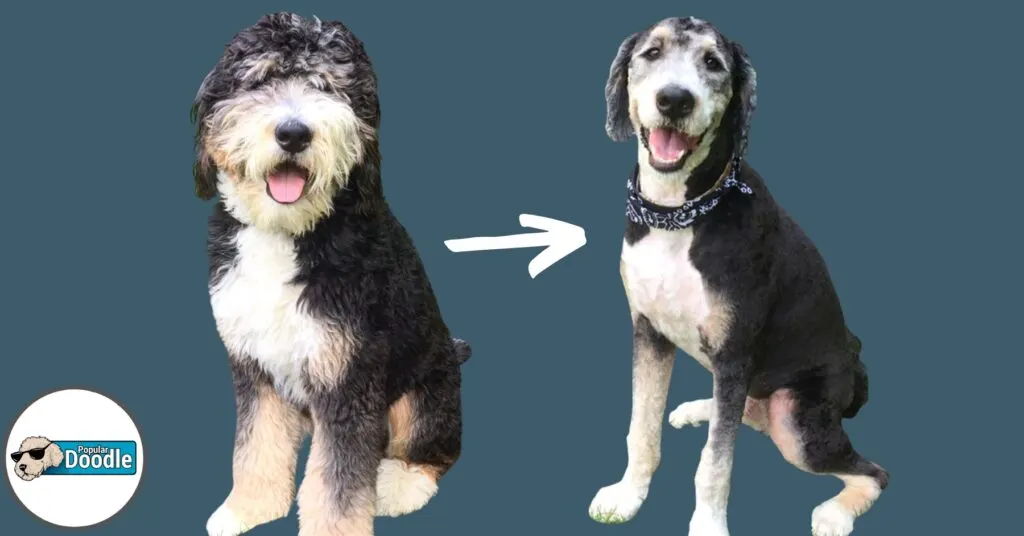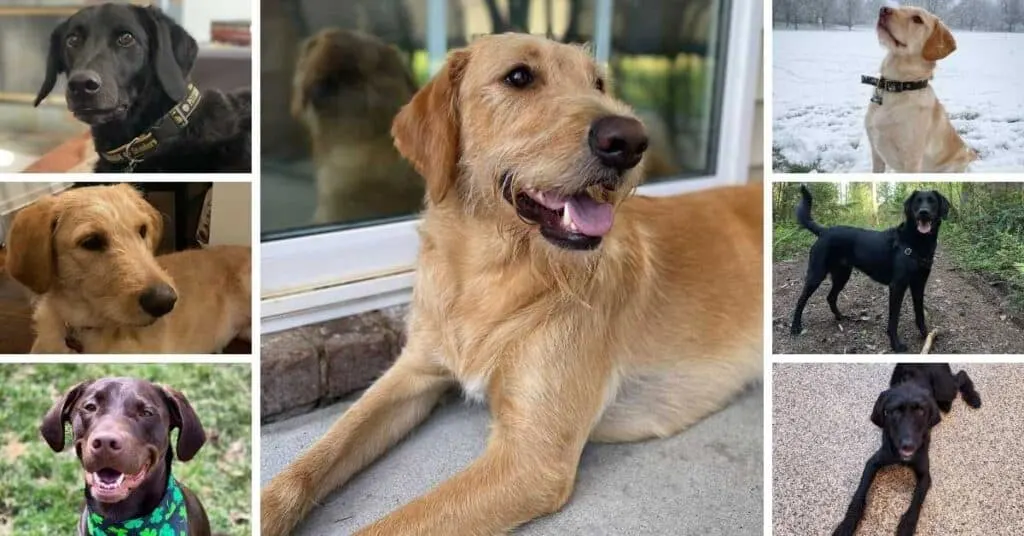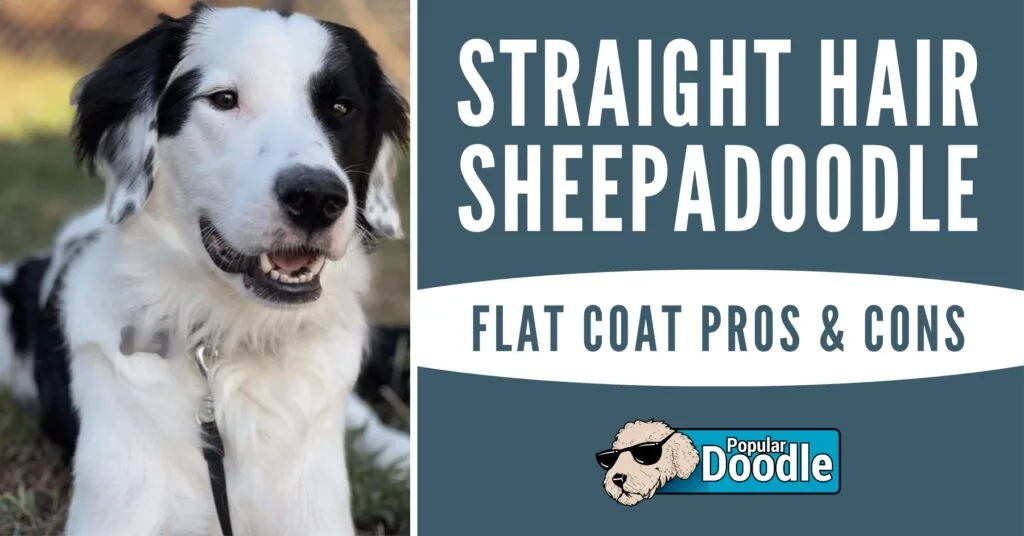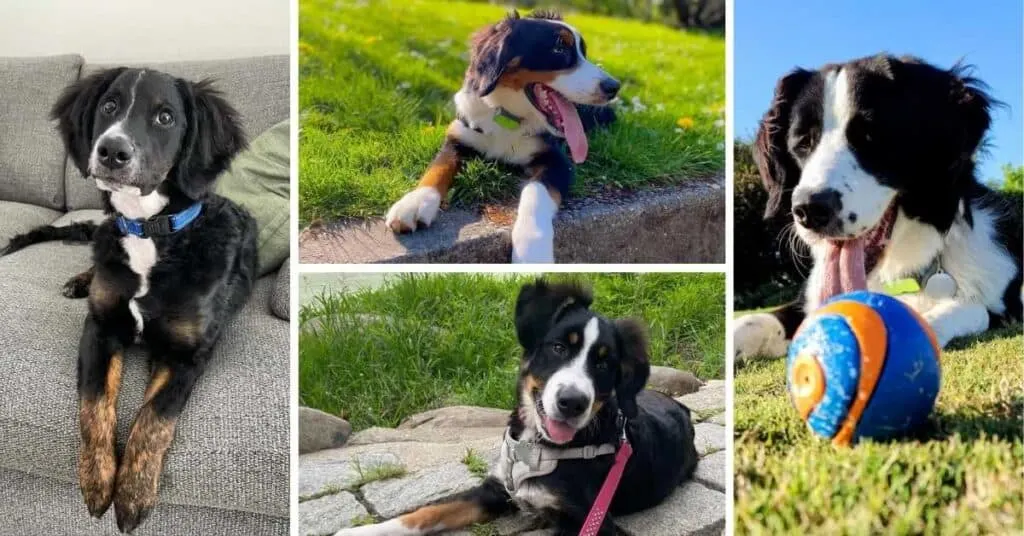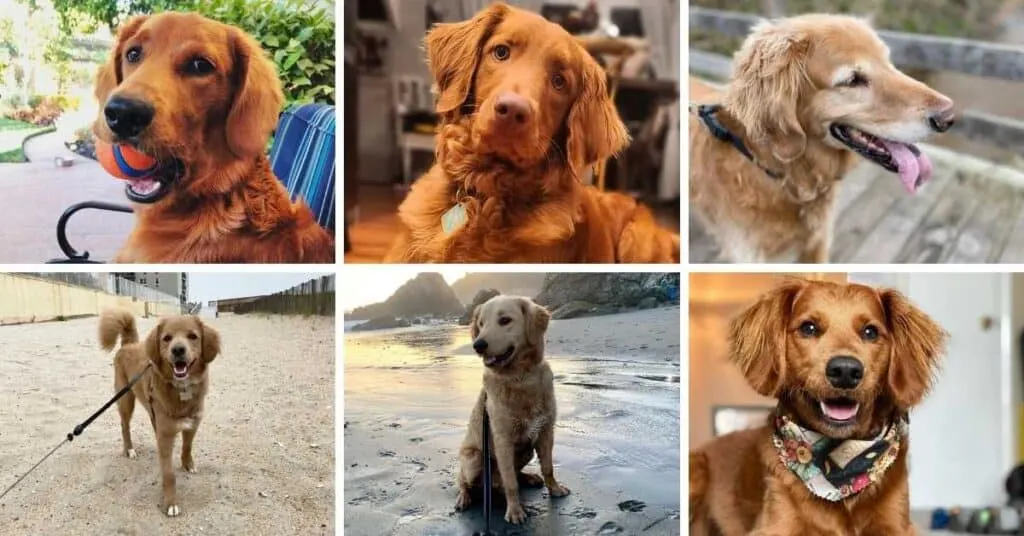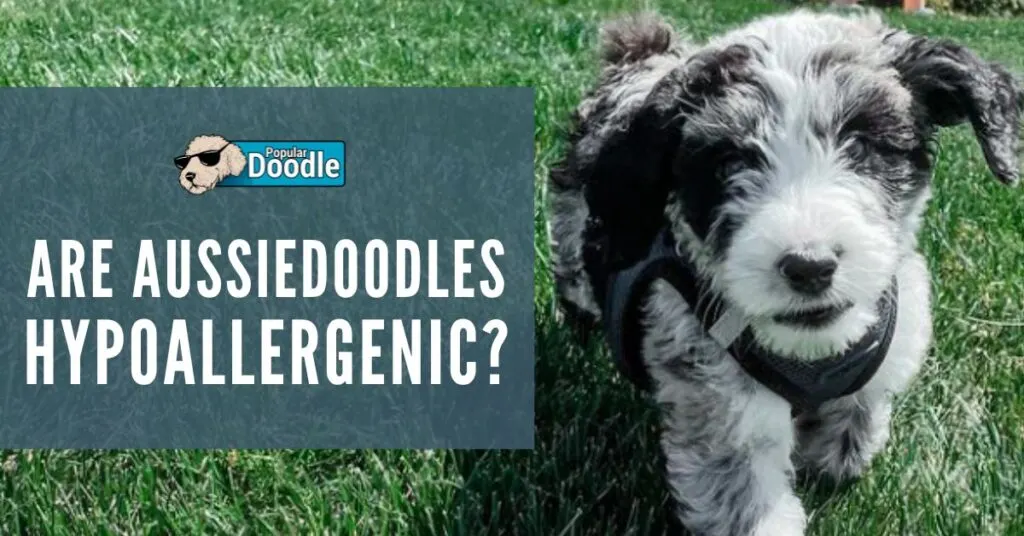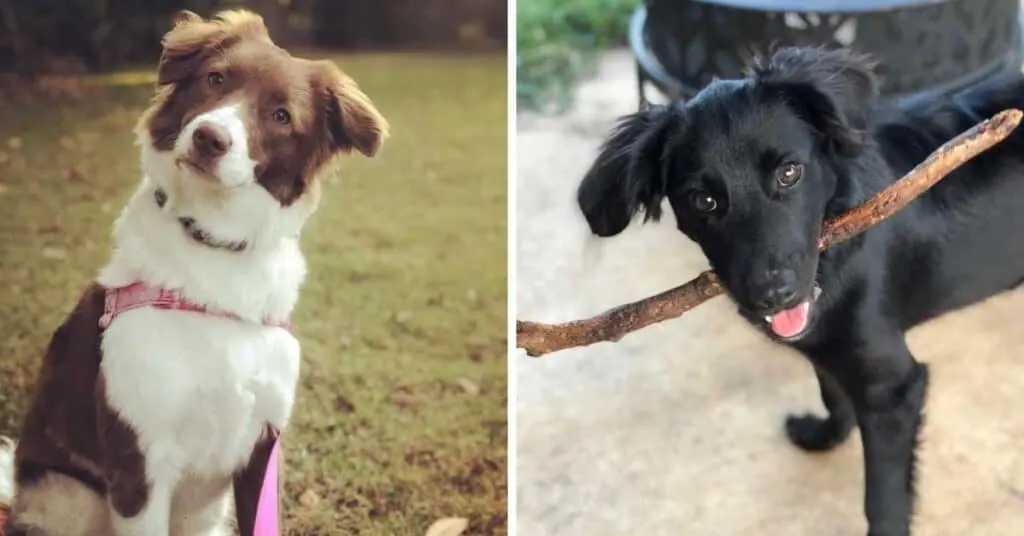
For many, the image that comes to mind when thinking of Aussiedoodles may be a dog covered in wavy or curly hair from head to toe. And though this can be accurate, straight hair Aussiedoodles do exist, and are just as adorable!
Aussiedoodles can have a wide variety of coat colors and hair textures, from curly to straight and everywhere in between.
You may have heard flat coated Aussiedoodles called “improper” by breeders. This term is the source of a lot of confusion when discussing them or other similar Poodle mix breeds.
Many people assume straight hair is always undesirable or bad when it comes to Aussiedoodles, but that couldn’t be further from the truth.
Can Aussiedoodles Have Straight Hair?
While not quite as common as in other mixes like the Labradoodle, yes, Aussiedoodles can have straight hair.
Like all mixed breeds, Aussiedoodles can externally show more traits from one side than the other.
Dogs who inherit more of their Australian Shepherd parent’s traits will often have straight hair. Others will have the typical curly hair from their Poodle parent. Some will have wavy coats that fall somewhere in between the two.
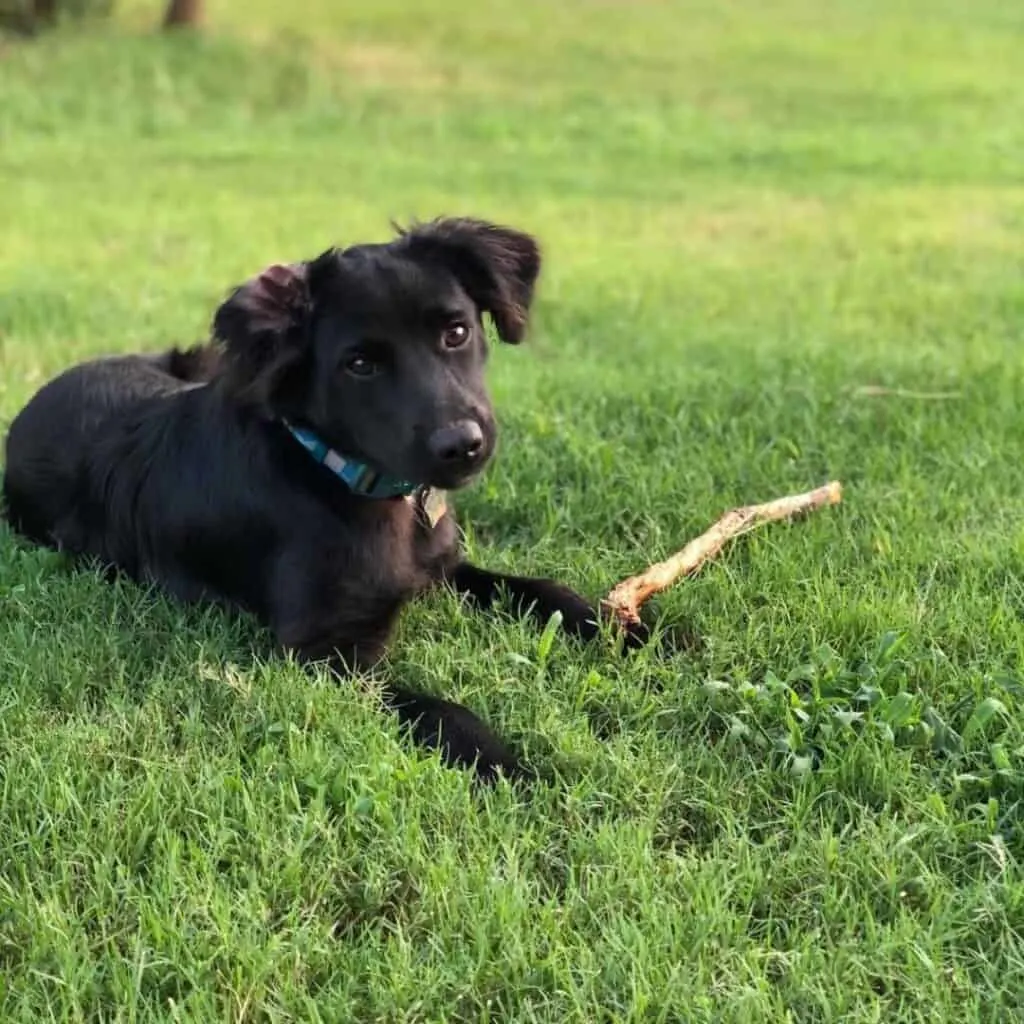
Are Aussiedoodles Always Curly?
Although many Aussiedoodles have curly hair, its texture can be everything from perfectly straight to dense curls.
Curly hair comes from the DNA of the Poodle, while straight hair comes from the Australian Shepherd’s DNA. In some cases, the mix results in a middle-point—an Aussiedoodle with wavy hair.
The reason many people prefer curly haired Aussiedoodles is that they are more likely to be allergy-friendly and non-shedding. Because of this, most breeders aim to maximize the number of puppies with curly hair.
That’s why you may notice more Aussiedoodles with curly or wavy hair rather than a straight coat.
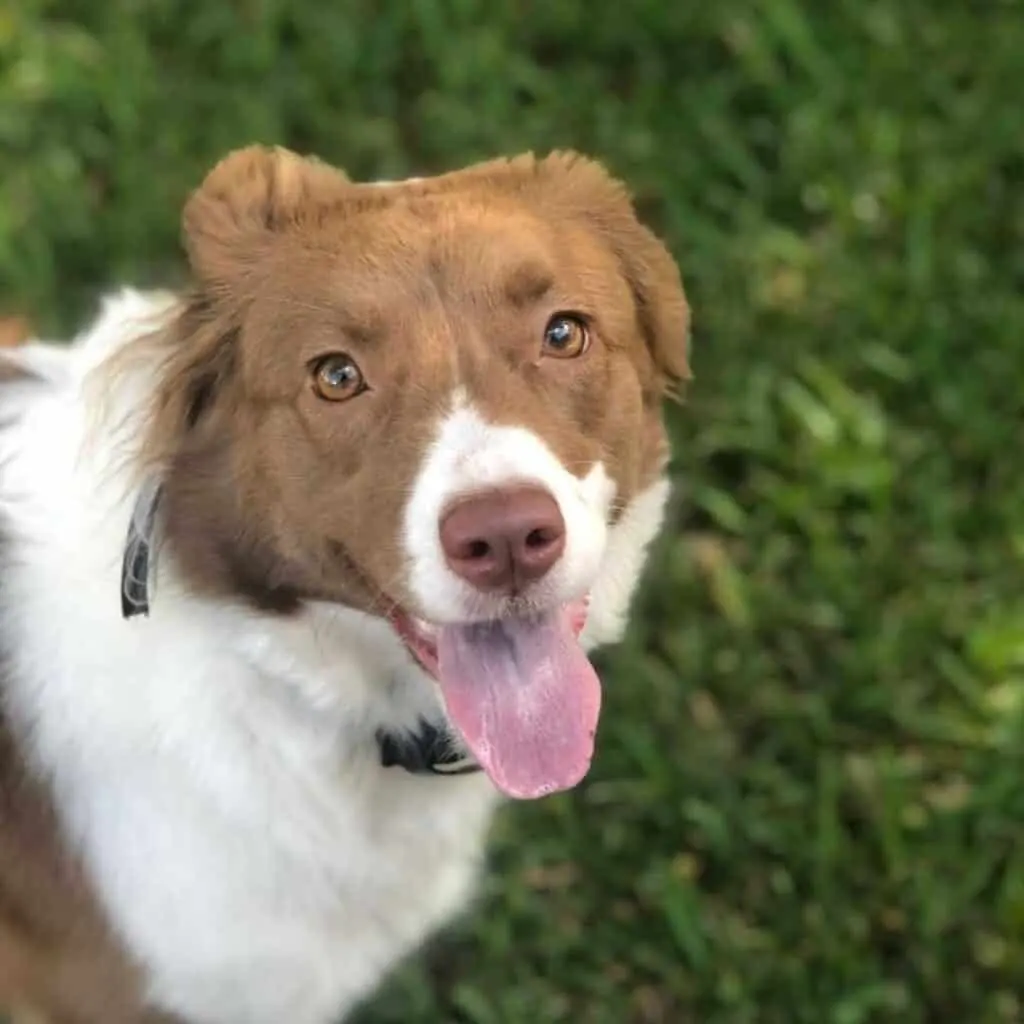
Why Does My Aussiedoodle Have Straight Hair?
Straight hair is just one of the many traits that could have been inherited by your dog. Looking at a litter of Aussiedoodle puppies, it isn’t unusual to see at least a few with straight hair. When an Australian Shepherd and a Poodle cross, the resulting Aussiedoodle will always look different, depending on what traits it gets.
The gene that determines whether or not your dog has curly hair is named “Cu Locus”, or KRT71. This gene is carried by the poodle parent, and if it is passed on to your Aussiedoodle they will have wavy or curly hair. An Aussiedoodle without the Cu Locus gene will have straight hair like an Australian Shepherd.
Most breeders will aim to breed curly-haired Aussiedoodles for many reasons—mostly because they shed much less or not at all, and they tend to be allergy-friendly. Because of this, straight hair Aussiedoodles are sometimes referred to as having improper coats. Many breeders even perform genetic testing, not just for their health, but also to maximize the chance of a curly dog.
Even specifically breeding for traits, it’s impossible to perfectly predict what coat type the resulting puppies will have. One factor that has a huge effect on what your Aussiedoodle’s hair will look like is what generation they are. In the next section, we will go into detail about Aussiedoodle generations and how they play into this.
Which Generation of Aussiedoodle Has a Flat Coat?
Which generation your Aussiedoodle is is the best indicator of whether they’ll have a flat coat or not. Generations that are closer in DNA to a purebred Australian Shepherd will have a greater chance at having straight hair than those closer in DNA to the Poodle.
Let’s begin with a quick overview of what Aussiedoodle generations are:
Each one of the generations is labeled with the letter “F”, which stands for “Filial”—this is used to mark mixed breeds. After F comes a number, usually 1-3, which indicates the generation.
Some may have a “B” after the number, which stands for “backcross”. Backcrossing means an Aussiedoodle was bred with one of its parent breeds, nearly always a Poodle.
This table provides an estimated DNA share for each generation of Aussiedoodle….
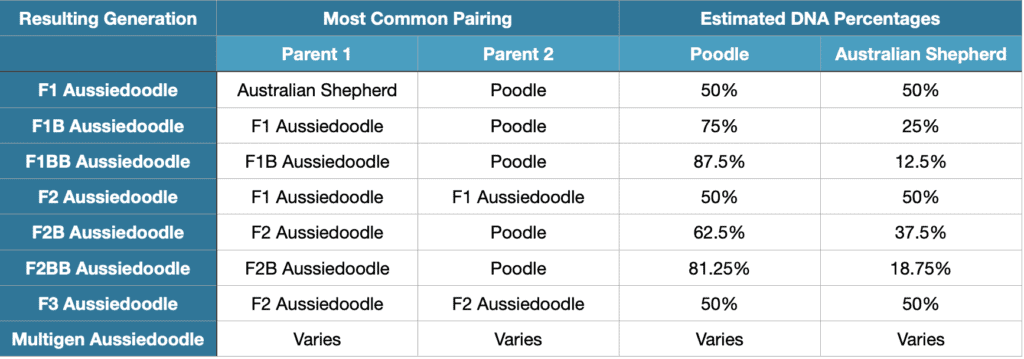
As you can see, without backcrossing, generations 1-3 all have 50% Australian Shepherd DNA. They are the most likely to be flat coated.
A generation backcrossed with an Australian Shepherd would theoretically give you the best chance for a straight haired Aussiedoodle, but very few breeders make this pairing.
Most people aren’t looking for a flat coated Aussiedoodle puppy. Since there is so much demand for the curly variant, if you prefer one with straight hair, you’ll sometimes get your own personal “pick of the litter” even if you’re lower on the waitlist.
Are Straight Hair Aussiedoodles Hypoallergenic?
Neither curly nor straight haired Aussiedoodles are completely hypoallergenic. As we said before, curly haired Aussiedoodles are likely to be more allergy-friendly than the straight haired variant.
An Aussiedoodle with a straight coat will usually be more hypoallergenic than a pure Australian Shepherd, but even that isn’t guaranteed. If you suffer from dog allergies, an Aussiedoodle with a higher amount of Poodle DNA is a far better choice.
Referring to our table above, the most hypoallergenic generations are, in order, F1BB, F2BB, F1B, and F2B. These generations, theoretically, have the most Poodle DNA – making them more likely to have an allergy-friendly, curly coat.
Straight Hair Aussiedoodle Shedding
Aussiedoodles with straight hair will shed a moderate amount, though slightly less than their Australian Shepherd parent. Keep this in mind if you’re interested in adding a flat coat Aussiedoodle to your family, as shedding can sometimes be a dealbreaker.
With frequent grooming and bathing as well as a healthy diet, the pain of dealing with shedding can be minimized, however. One of the most important things many new dog owners neglect is investing in proper grooming tools.
We’ve tested a fair amount of grooming tools, and these are our top picks:
- Chris Christensen Big G Slicker Brush: Though a bit on the expensive side, this brush is a cut above the rest, and it’s impossible to go back to another after trying it out.
- FURminator De-Shedding Tool: This tool is amazing for heavier shedders. Use it to gently remove loose hairs from your Aussiedoodle’s coat, before they fall out, without damaging it at all!
- Burt’s Bees Shed Control Shampoo: For the best preventive shedding control, a good shampoo is essential. This one is special in that it’s made from all-natural ingredients with no harsh chemicals that can harm a sensitive dog’s skin.
While these three essential tools can make shedding far more manageable, they can’t stop it entirely. For any stray hairs, we recommend a special pet hair vacuum. Here are some of the top-rated ones available on Amazon:
Flat Coat Aussiedoodle Grooming
While a flat coat usually comes with having to deal with more shedding, it also means grooming is much easier. When compared to those with curly hair, Straight hair Aussiedoodles need to be brushed much less often, and their hair hardly ever mats up.
Flat coat Aussiedoodles also require less professional grooming. Since they shed, they don’t need as many frequent haircuts as their curly-haired friends do.
Of course, less day-to-day grooming doesn’t mean no grooming at all. Your Aussiedoodle still needs a routine of brushing, bathing, and nail trimming in addition to any necessary grooming appointments.
Flat Coat Aussiedoodle Puppies: Pros and Cons
Pros
- Less Competition for Litter Picks: The higher demand for curly-haired Aussiedoodles puppies also means even if you get a late pick at a litter—you have a good chance of having a flat coat puppy available.
- Less Expensive: Demand for F1 and F2 generation puppies, which are more likely to have a straight coat, is much lower than backcrossed generations. This means you’ll pay less on average for a flat coat puppy.
- Less Frequent Haircuts: Fewer trips to the groomer for haircuts – which are a necessity for non-shedding, curly-haired dogs, means the potential for saving even more money.
- Less Daily Grooming: Like we just laid out, Aussiedoodles with straight hair require very little maintenance when compared to curly-haired dogs to avoid tangling and matting.
- Cute Australian Shepherd Appearance: Of course, many people just prefer an Aussiedoodle that looks more like an Australian Shepherd. We can’t deny they’re cute!
Cons
- Allergies: If you’re allergic to dogs, the more allergy-friendly curly Aussiedoodle is probably the smarter option.
- Shedding: If you hate the idea of dog hair sticking to your couch or clothes, an Aussiedoodle with an improper coat may not be the best choice. These dogs will shed, at least a bit, so keep this in mind when making your decision!
- No Fluffy Poodle Appearance: If you want your Aussiedoodle super fluffy, with a teddybear-like coat, a flat coat variant may not be for you.
What Coat Will My Aussiedoodle Puppy Have?
The coat an Aussiedoodle has as a puppy doesn’t always match what they’ll have as an adult—at least at first glance. Through what is called “furnishings”, however, it’s possible to accurately predict what an Aussiedoodle puppy’s coat will be.
If an Aussiedoodle has furnishings, longer hairs along their snout and above the eyes, they will have a curly or wavy coat. The easiest furnishings to see on a puppy or those along the bridge of their nose.
Below is an example of a doodle with and without furnishings:
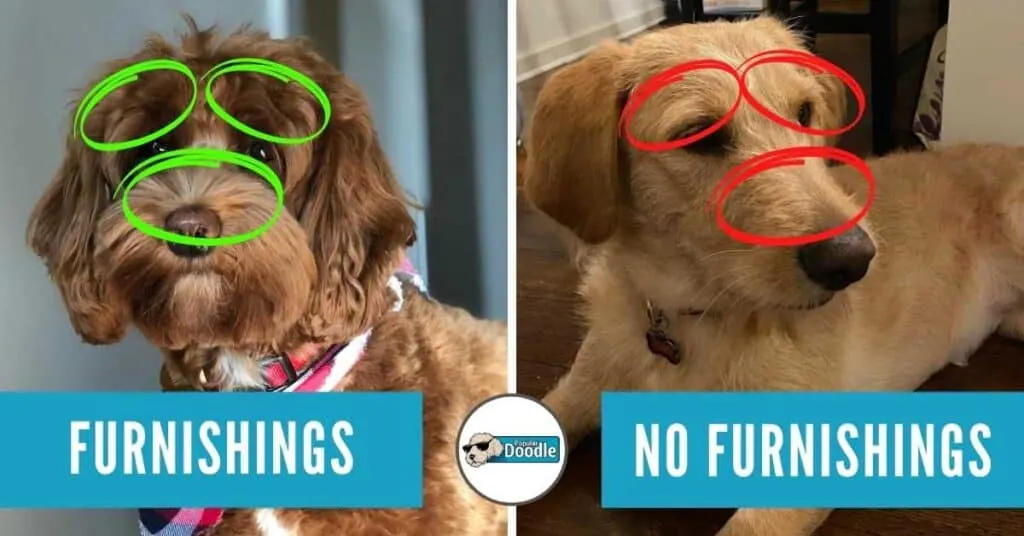
Will an Aussiedoodle Puppy Coat Change?
All Aussiedoodle puppies are born with a very soft coat that they shed at around 6 to 12 months in age. Their adult coat will usually be more like hair, or wool, and be less soft.
While your Aussiedoodle’s puppy coat will change, one with an improper coat won’t suddenly become super curly and stop shedding. The opposite is also true—a puppy with furnishings won’t shed more as time goes on and won’t flatten out.
An Aussiedoodle that suffers a drastic change in shedding may be experiencing a health problem and should be checked out.
Final Thoughts
Just because flat coated Aussiedoodles are called “improper” doesn’t mean they’re bad or worse than a curly Aussiedoodle. Both are adorable in their own way! One may be better for your family or situation than the other though, and that’s perfectly fine.
We hope the information we laid out in this article helped you to make the best possible decision!





